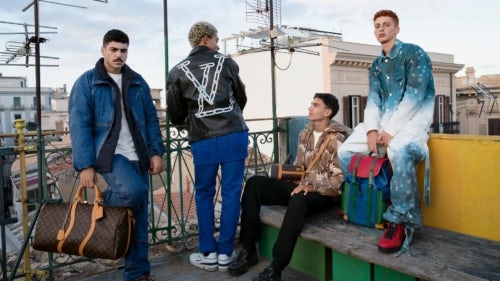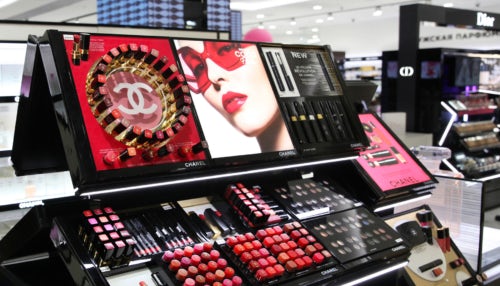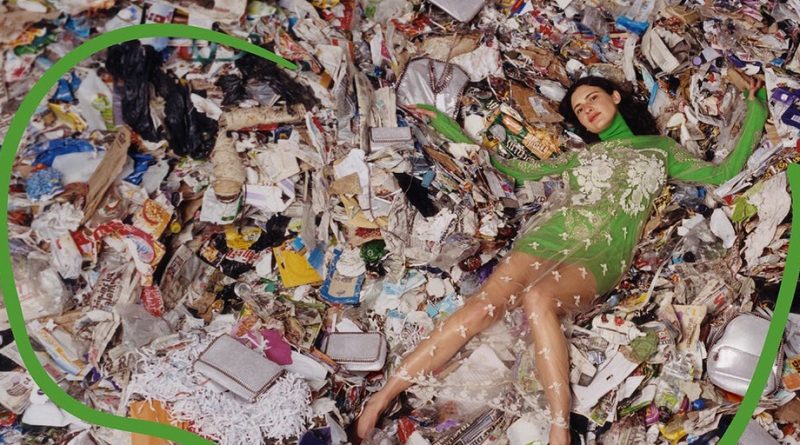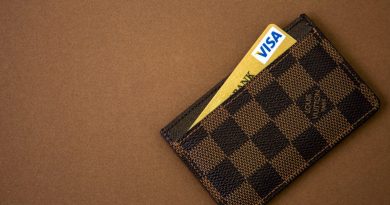Will Self-Regulation Solve Fashion’s Sustainability Problem? | BoF Professional, This Week in Fashion
That producing clothes spews emissions into the atmosphere, leaks chemicals into waterways and creates mountains of waste, at times exploiting labour, is a reality the fashion industry is now trying to address. This week, The Fashion Pact — the industry’s highest-profile sustainability initiative — announced a new set of targets that have brought together an unlikely alliance that includes Prada and Gap, Chanel and Zara.
The announcement was unique in a number of ways. Within the space of one year, The Fashion Pact, an initiative originally pulled together by Kering Chief Executive François-Henri Pinault at the behest of French President Emmanuel Macron last summer, has achieved more than many other similar initiatives. It has roughly doubled its signatories, agreed on seven targets, and wrangled a group of top tier fashion CEOs to make a collective public statement.
The overall targets focus on three key areas: mitigating fashion’s impact on climate, biodiversity and the oceans. Among other things, they include time-bound, quantitative commitments to tackle emissions, limit plastic use and reduce deforestation.
“It’s a long conversation to make things happen,” says Chanel Fashion President Bruno Pavlovsky, pointing to multiple in-depth conversations just to settle on an agreement around cotton (signatories have committed to transition 25 percent of their key materials to “lower climate impact sources” within the next five years).
That Chanel is part of the conversation at all is notable; it rarely participates in such cross-industry initiatives. Nor does Hermès, another signatory. Or Prada. (LVMH, whose arch-rival Kering convened the group, remains a hold out. In response to a request for comment, the company referred to a September interview Image and Environment Director Antoine Arnault gave Le Figaro in which he pointed to the fact LVMH has had its own environmental department for nearly three decades and claimed the group’s efforts to reduce its impact were “best in class.”)
Then there’s the fact it’s CEO-led and was formed in a crucible of political pressure — in addition to Macron’s input, it was presented at the G7 summit in Biarritz last August. Both those things have lent the group momentum, purpose and perhaps, from an executive perspective, some urgency. As Pavlovsky puts it, “The Fashion Pact is not new regulation, it’s an aspiration.” Indeed, participation is voluntary, signatories will choose how they meet the group’s targets and there’s no mechanism for accountability if they don’t.
Which raises the question, how much impact can The Fashion Pact really have?
To date, industry initiatives to tackle these issues have made for slow and limited progress. The sector’s track record for self-policing is poor, with decades of work to clean up the worst labour abuses in the industry’s supply chain — the issue fashion has focused on for longest — widely viewed as insufficient.
Mounting concern over fashion’s negative social and environmental impact among consumers, regulators and investors is upping the pressure for more action, but will the industry take actions that may not match its own financial interest?
Though some sustainability initiatives could bolster the bottom line by driving efficiencies and leaning into shifting consumer demand, many experts ultimately agree that making fashion meaningfully more sustainable will be difficult, if not impossible, within the framework of the industry’s current growth-focused business model. Some argue it’s an impossible conflict between long- and short-term interests.
Though Pinault launched The Fashion Pact last year with a call to fellow executives to join in setting challenging goals, its consensus targets reflect the different pace of progress across its signatories.
For instance, roughly a third of signatories already source 50 percent of their energy from renewable sources, a target The Fashion Pact has set for 2025. When it comes to plastic use, around 60 percent of signatories have already eliminated single-use plastic bags from their retail businesses, but that reflects the fact that more than 50 countries globally have banned or regulated them. Overall, the group has set a target to eliminate plastic that is not reusable, recyclable or compostable in consumer packaging by 2025 and in business operations by 2030.
“We are very much aware those targets are not the end of the story,” said Fashion Pact Executive Director Eva von Alvensleben. “There’s a clear need to accelerate the journey.” The organisation also says it plans to provide regular updates around its progress, using transparency as a means to continuously drive action. Its targets to eliminate single-use plastic packaging are more ambitious than the French government’s regulation, which sets the deadline at 2040, it said.
And that’s not to say The Fashion Pact isn’t valuable. The industry badly needs the CEO-level engagement, collaboration and focus that it has brought to climate issues. It’s already helped push the industry into gear to examine its impact on biodiversity, an issue with which only a handful of companies were actively engaged previously. The opportunity to develop expertise, share knowledge and accelerate change within the industry is important.
But, part of the motivation of leaning into cross-industry agreements like the Fashion Pact may also be to pre-empt potentially challenging government regulation. If fashion can’t forestall regulation forever, it can at least position itself to influence it.
THE NEWS IN BRIEF
FASHION, BUSINESS AND THE ECONOMY

LVMH’s fashion division is enjoying double-digit growth despite the pandemic | Source: Courtesy
LVMH reports double-digit growth in its fashion business, despite pandemic. The luxury conglomerate sold 12 percent more handbags and ready-to-wear in the third quarter than it did over the same period last year. LVMH’s Chinese customers were among the quickest to adapt to shopping’s new normal, but a “big, big increase” in online luxury shopping also played an important role in boosting sales, according to Chief Financial Officer Jean Jacques Guiony.
Tiffany says October sales strong as legal battle With LVMH drags on. The jeweller said its sales in Mainland China were “extremely strong” and its business was recovering in the United States, boosted by strong digital sales. The company has forecast an increase in fourth-quarter earnings by a mid-to-high single-digit percentage from a year earlier. The news comes as LVMH wins EU antitrust approval for the Tiffany deal. The luxury conglomerate and Tiffany are suing each other after a takeover deal went south.
Fast Retailing annual profit likely halved this year. Analysts predict the Japanese retailer’s operating profit fell to 137 billion yen ($1.3 billion) in its fiscal year ending in August, but expect it to rebound around 70 percent in the coming year. In a sign of improvement, in-demand items like reusable masks and loungewear caused same-store sales to jump 10 percent in August from a year earlier
French Connection first-half sales halve. The decline more than tripled underlying losses at the British retailer compared to the same period a year earlier. The company sank to a loss of £12.1 million ($15.37 million) compared to a £3.6 million loss a year earlier. The retailer did note that online sales were improving, jumping 8.1 percent to the end of July.
Fashion promises more transparency on sustainability data. The Sustainable Apparel Coalition’s Higg Index is planning to make some of the data from its sustainability index public. Higg Co has announced plans to debut a public-facing data portal in 2021, which will give consumers, NGOs and journalists access to comparable data that can back up companies’ sustainability claims for the first time.
J.C. Penney sale talks stall ahead of crucial holiday season. The standstill comes ahead of a critical quarter, raising the prospect that creditors will carry the burden of millions of dollars in extra costs. J.C. Penney’s lenders and would-be buyers Simon Property Group Inc. and Brookfield Property Partners LP may now have to turn to mediation to determine the outcome of the deal.
Madison Avenue rent plunges as Manhattan retail takes a hit. The high-end shopping corridor, home to luxury brands and swanky boutiques, saw a 17 percent decline in rent in the third quarter. The price per square foot on Madison Avenue averaged $779, a 52 percent drop from its peak over the past five years.
Walmart replaces Black Friday with a month of discounts. America’s largest retailer is set to host three weekends of promotions throughout November, both online and in stores. Discounts will be offered in a range of product categories. Apparel will feature during the second and third weekends of events.
THE BUSINESS OF BEAUTY

New coronavirus restrictions are set to pressure the UK’s beauty service industry | Source: Shutterstock
Further lockdowns could cost the UK beauty service industry £28.4 billion. “We are yet again in a state of flux, despite no evidence that hair and beauty salons have a high risk of transmission,” British Beauty Council CEO Millie Kendall wrote in a Telegraph article. Most salons are making less than 50 percent of their pre-pandemic turnover, Kendall writes.
Emily Ratajkowski joins Loops Beauty as creative director. The model will work with the skincare start-up, which launched back in February, on both content and products. Ratajkowski’s main responsibilities will include the brand’s social campaigns and marketing strategies.
PEOPLE

Nicolas Hieronimus has been named L’Oréal’s next CEO | Source: Courtesy
Nicolas Hieronimus named L’Oréal CEO. Hieronimus will take over from Jean-Paul Agon as chief executive of L’Oréal, effective May 2021. Hieronimus, who has been with the company for nearly 35 years, has been a frontrunner for the position since overseeing a successful period of expansion at the group’s luxury division. Agon will stay on as chairman and Barbara Lavernos will succeed Hieronimus in his current role.
Retail consulting veteran Adrian Mitchell appointed Macy’s CFO. Mitchell is taking over from Felicia Williams as the chief financial officer of Macy’s, effective November 2020. Mitchell is currently a managing director and partner at Boston Consulting Group and will take over financial responsibilities including accounting, treasury and procurement in his new role. He will report to Macy’s Chairman and Chief Executive Jeff Gennette.
Sebastian Suhl named new Trussardi Group chief executive. Suhl has been appointed chief executive of Trussardi Group, effective immediately. At Trussardi, Suhl will helm the group’s re-launch, grow the brand’s presence in international markets, and spearhead its digital transformation. Suhl will also join the company’s board alongside President Tomaso Trussardi and Chief Operating Officer Giuseppe Pinto.
MEDIA AND TECHNOLOGY
Asos sees profit quadruple on strong pandemic demand. The fast-fashion e-tailer made a pre-tax profit of £142.1 million ($180.46 million) in the year to August 31, up from £33.1 million in the same period last year. Sales jumped by 19 percent to £3.3 billion, boosted by an influx of 3.1 million new customers.
Amazon pitches early holiday shopping with fall Prime Day event. The 48-hour marketing event, typically held in July, is now a kick-off to what will be an earlier holiday shopping season. The e-commerce giant has been focused on delivering essentials to home-bound customers but is now shifting its focus to delivering holiday orders and member-only discounts.
Compiled by Daphne Milner.
BoF Professional is your competitive advantage in a fast-changing fashion industry. Missed some BoF Professional exclusive features? Click here to browse the archive.



